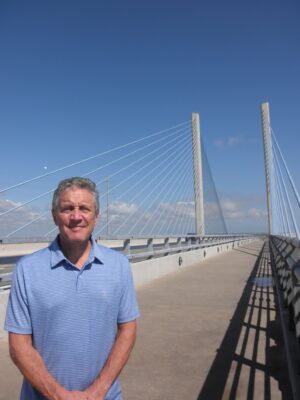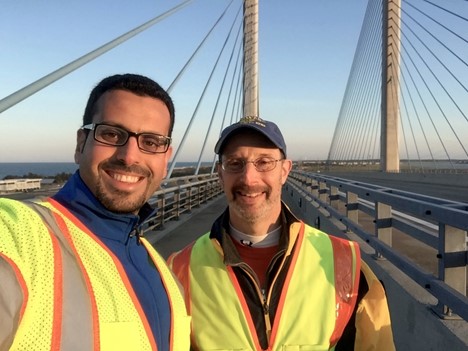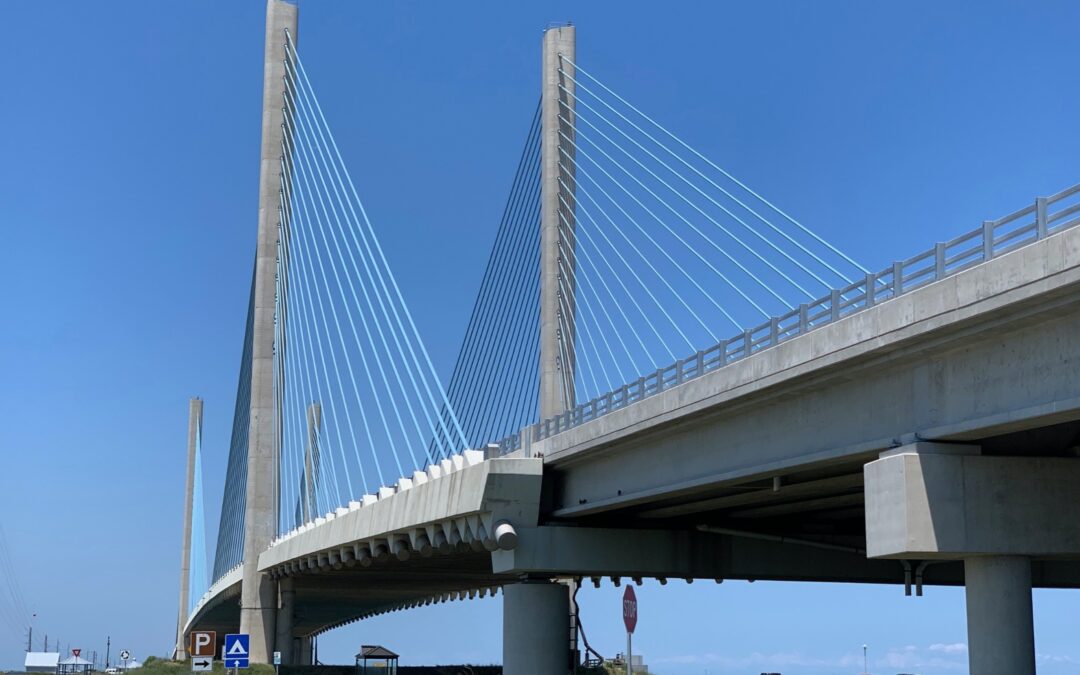by Tripp Shenton, Michael Chajes, and Gary Wenczel
When construction of the 1,749 ft long Indian River Inlet cable-stayed bridge was completed in May of 2012, it became one of the nation’s first “smart” long-span bridges. Being one of the Delaware Department of Transportation’s (DelDOT’s) most significant assets, they partnered with our Civil and Environmental Engineering’s Center for Innovative Bridge Engineering (CIBrE) to design and install a comprehensive structural health monitoring (SHM) system. The fiber-optic based system employs more than 120 sensors of varying type distributed throughout the bridge. The system, continuously collects data during normal operation, during large wind events, as well as during regularly scheduled controlled load tests. All of this data is, in turn, evaluated and used to assess the ongoing “health” of the bridge performance.

Professor Tripp Shenton on a recent visit to the bridge (photo courtesy of T. Shenton)
So, after eight years of monitoring the bridge, what has been accomplished and what has been learned?
- There is a LOT of data being collected. One significant part of the effort has been to collect, validate, and organize the data in a way that makes it convenient to evaluate. Quarterly reports are generated to summarize the most important observations.
- The system has to be maintained on an ongoing basis. In the decade since much of the equipment was procured, many things have changed. Computer operating systems are different, companies that supplied some of the sensors and software have been bought and sold, the bridge is exposed to aggressive coastal weather including sea spray, large wind events and lightning. Fortunately, the design considered these factors and the system has remained well intact.
- Numerous undergraduate, MS, and PhD students have worked with the collected data to find the best ways to use it to evaluate the bridge’s condition. In doing so, they have enabled us to provide DelDOT with information that supplements their own biannual inspections and helps them to better understand how the bridge is behaving. This baseline knowledge will be invaluable should the bridge performance ever change. And, the opportunity to work on these projects has prepared these students for future careers in the field of bridge engineering.
- We have shown that the bridge is preforming as expected, and by continuing to monitor it, and by developing ever increasingly sophisticated methods for analyzing the data, will be ready to detect changes in performance that could help us better understand how the bridge is aging, and when maintenance actions are needed.
As sensors become less expensive and more sophisticated, as big data technology becomes more widespread, we hope that this revolutionary project will have laid the groundwork for a new generation of “smart” bridges.

UD PhD Alum Hadi Al-Khateeb and Professor Michael Chajes During the First Load Testing of the IRIB (photo courtesy of M. Chajes)

